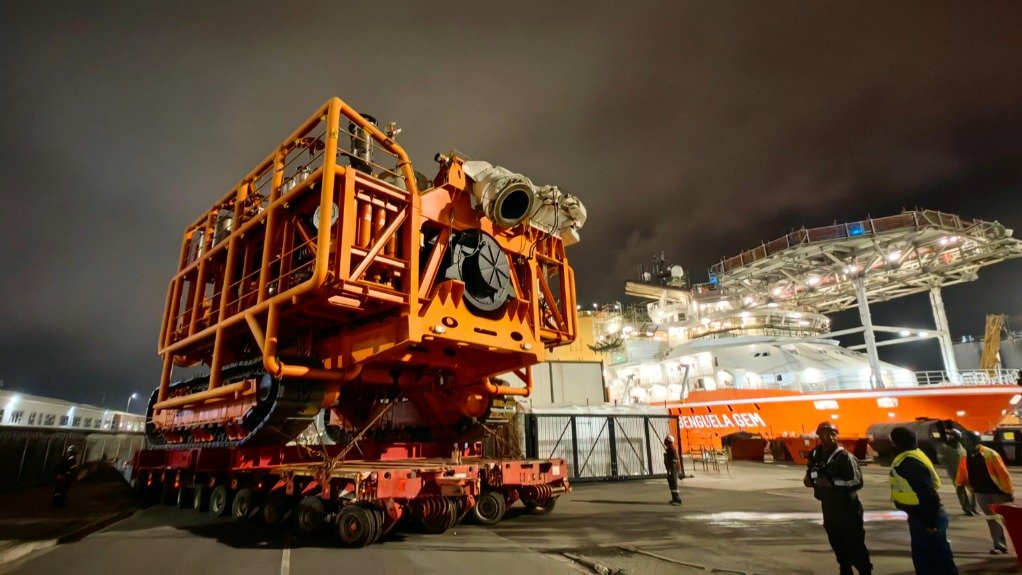
De Beers Group’s Upstream Technology business has introduced a new generation subsea diamond recovery crawler, developed for Debmarine Namibia’s flagship vessel Benguela Gem.
The crawler took almost four years to develop and is already operating off Namibia’s coast. Project Manager for the Next Generation Crawler (NGC), Rudi Agostinho, said a second identical unit is being assembled to take over during servicing and ensure minimal downtime.
“We have taken everything we have learned from earlier models and engineered a crawler that can operate with significantly enhanced efficiency, with greater reliability,” Agostinho said.
He added that the upgrade boosts the Benguela Gem’s recovery rates by about 20% with minimal increase in operating costs, allowing the vessel to fully benefit from its onboard treatment plant.
The crawler weighs 370 tonnes, measures 28 metres long, 8 metres high and 8 metres wide, and operates between 100 and 135 metres below sea level.
Its sweeping mining arm covers a 21-metre arc in just 25 seconds, drawing seawater, sand, gravel and diamond-bearing material through an 800 mm pipeline.
Sebastian “Bas” van der Laer, Mining System Specialist at Upstream Technology, said the goal was to improve engineering availability from 82% to 87%. He highlighted the crawler’s hydraulic track tensioning system, which automatically adjusts to conditions, reducing wear, extending the life of the track chain and improving gearbox torque.
Technology Development Manager, Imraan Parker, said automation was central to the design.
“Automation enables more predictable performance and better control over the stresses on the machine which in turn extends its structural life,” he explained. The automation also extends to deployment from the vessel.
The crawler is equipped with a forward-looking sonar system that provides detailed images of the seabed, enabling recovery down to the footwall.
At Upstream Technology’s Cape Town facility, new techniques were required for assembly. Senior Workshop Engineering Officer, Abdul-Gameed Davids, noted that the 47-tonne dredge motor was lifted into the frame using two synchronised overhead cranes, a method now formalised for future builds.
Senior Project Engineer, Steven Smith, said transporting the crawler to the harbour demanded careful planning. A 750-tonne crane hoisted the crawler onto the quay before it underwent full-scale land-based simulations, testing more than 2.2 km of cabling and over 10,000 connections.
Collaboration with Debmarine Namibia’s operational team during assembly ensured feedback from the vessel’s crew was incorporated into the final design.
Agostinho said the new crawler was designed to secure the future of marine diamond recovery.
“By combining advanced tools, adaptive systems, automation and predictive maintenance, we have delivered a crawler that will recover more material, more consistently, with less downtime – even in tougher conditions,” he said.-miningweekly/miningandenergy.com.na







